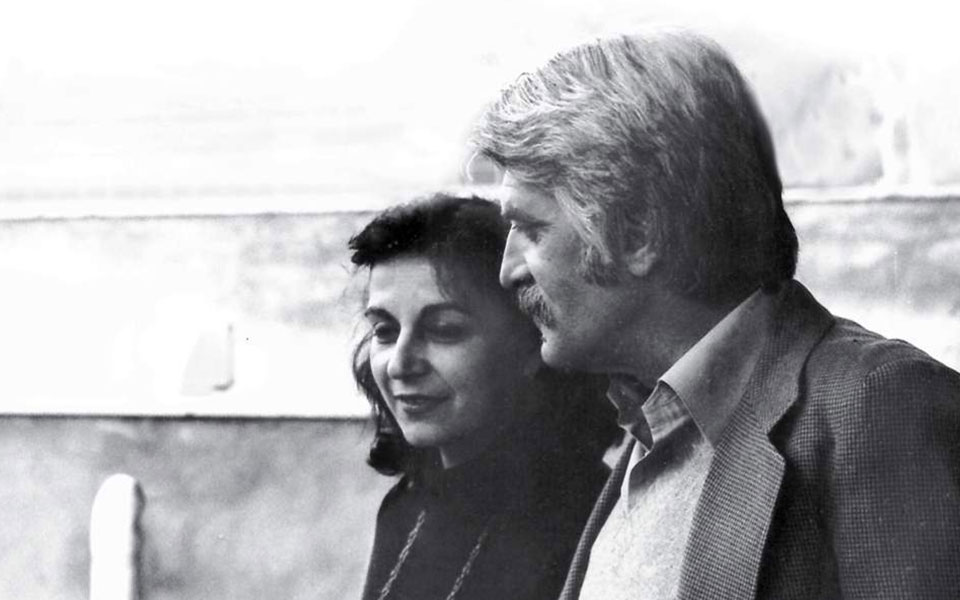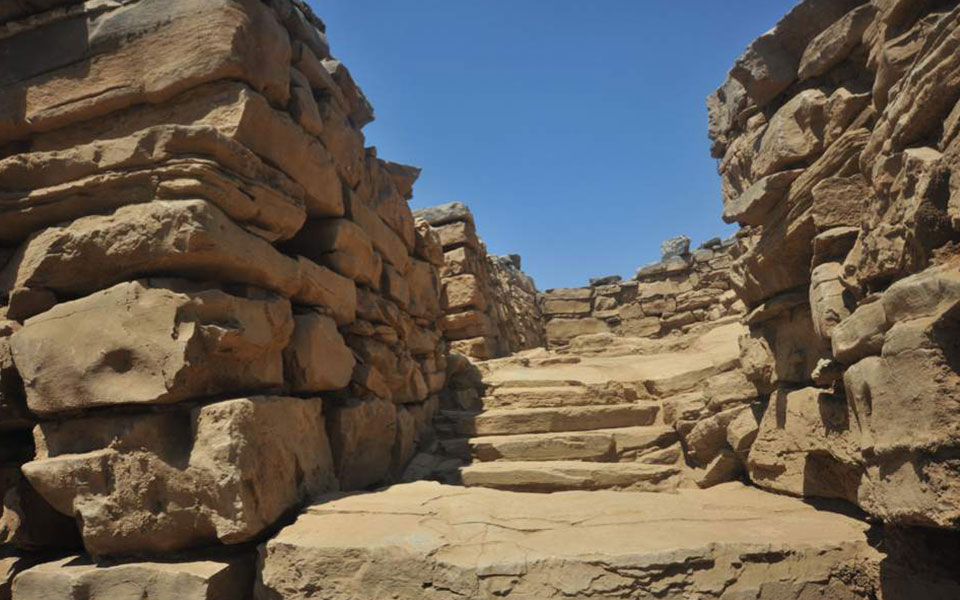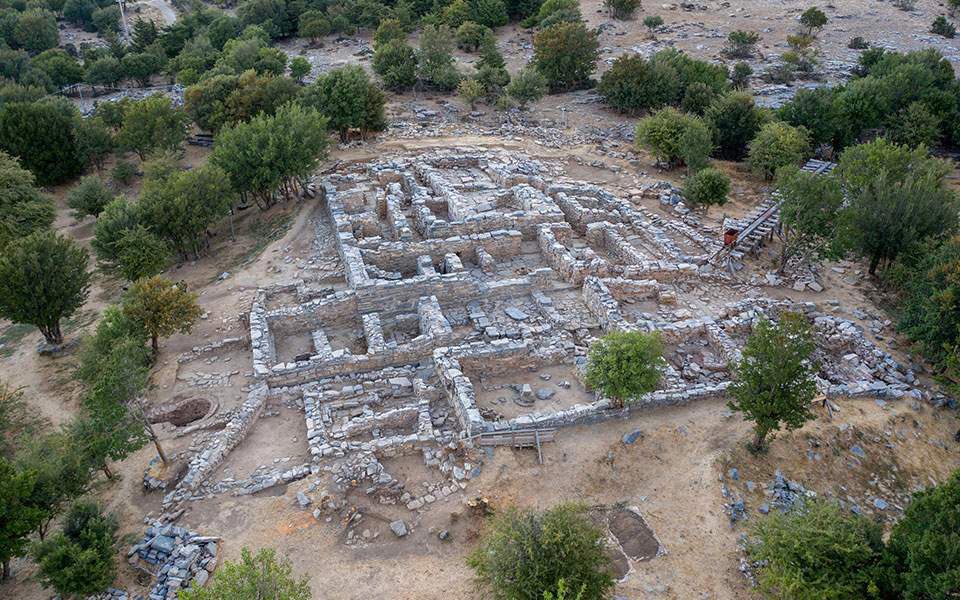“I feel this year’s findings have been a vindication for Sakellarakis. He always claimed – and I did not believe it at the time – that the excavations at Zominthos were very important. He would say “I feel just like Evans, when he excavated Knossos”, says the Honorary Head of Antiquities, Dr. Efi Sapouna-Sakellaraki, clearly moved. It is she who continues to conduct the Archaeological Society’s excavations at Zominthos, at an altitude of 1200 meters above sea level, approximately 7 kilometers west of Anogia.
Findings indicate that investigations in this palace crowning Mount Psiloritis, “inhabited by the descendants of the Knossos dynasty”, has not come to an end. On the contrary, it has many more secrets to reveal. Its location is strategic – exactly halfway between the Palace of Knossos and the Ideon Andron caves. It was an important economic, religious and cultural center. Access from the north gate of the palace was via a ramp, dating from the Protopalatial Period (approximately 1900 B.C.), that ended in a robust, retaining wall. In the Neopalatial Period (1700 – 1600 B.C.) the ramp was covered with plaques twice.
The two-story, perhaps even three-story, Main Building was in use from at least 2000 B.C. Findings from previous excavations have verified that the expansion of the complex began in 1700 B.C. As the archaeologist explains, these structures are not flimsy constructions but entire apartments meant to extend the palace grounds.

“We knew that there was an older structure under the palace, but we could not estimate its size. Now we were able to explore the older part as well. In the Complex of the palace’s first addition, two smaller complexes north of the main building have been discovered. An important sanctuary was located in one. A section had been excavated last year, where we found an altar paved with stones, and some 200 ritual items (rhytons, large lamps, etc). After cleaning and some serendipitous rainfall, a small part of a gold sheet was discovered. And so, this year, I decided to count the stones and raise the cobbled altar. And what a surprise: a burned tree trunk, lined in gold! We discovered 90 gold sheets, small plates, which must have been attached to it or scattered around the altar. It seems to have been a ritual idol, a xoanon (Archaic wooden cult image), next to which we found shells, a beautiful seal, etc.”
Everything indicates that an early sanctuary operated there, which the later inhabitants respected and did not strip of its gold. They built a stone altar on top, where the 200 items of pottery were found. As the excavator explains, in the room where they located the xoanon, an older layer, animal and human figurines were discovered, like the ones usually found at the most important sanctuaries. Among them was a lovely female figurine that was dubbed “Lady of Zominthos”.

According to Ms. Sapouna-Sakellari, the stone-floor rooms of the second complex (in the north section of the complex) are also extremely interesting, as they have uncovered an exceptional sewage system with pipes and drainage. “We discovered the technical structure of a building constructed wisely, just as the entire palace itself. Everything at Zominthos points to advanced technical skills and expertise”. And if there is one thing that stands out, it is the seal in the shape of a flower that dates from before 2000 B.C. “It is a small masterpiece”. As far as the gold plates found near the xoanon, “they were a surprise as they are not usually located in palaces, but in tombs”.
The team also located a coin depicting the Venetian Doge Pietro Gradenigo (1289 – 1311), which coincides with the Fourth Crusade and the Venetian rule in Crete. Of course, conducting an excavation during a pandemic was not easy. But the good news is that the archaeological site of Zominthos in the Municipality of Anogia has been included in the Regional Operational Programme of Crete, and future excavation works will be conducted in the surrounding spaces.
This article was first published in Greek on kathimerini.gr











